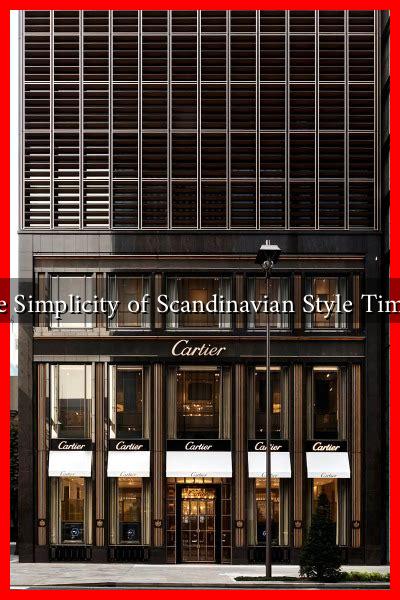-
Table of Contents
- Is the Simplicity of Scandinavian Style Timeless?
- The Core Principles of Scandinavian Design
- A Brief Historical Context
- Contemporary Relevance of Scandinavian Style
- Case Studies: Timeless Scandinavian Designs
- Statistics Supporting Scandinavian Design’s Popularity
- Conclusion: The Timelessness of Simplicity
Is the Simplicity of Scandinavian Style Timeless?
Scandinavian design has gained immense popularity over the years, characterized by its minimalism, functionality, and connection to nature. But the question remains: is the simplicity of Scandinavian style truly timeless? This article delves into the principles of Scandinavian design, its historical context, and its relevance in contemporary interiors, ultimately arguing that its simplicity is indeed a timeless quality.
The Core Principles of Scandinavian Design
Scandinavian design is rooted in several key principles that contribute to its enduring appeal:
- Minimalism: The design ethos emphasizes simplicity and the elimination of unnecessary elements, creating a clean and uncluttered aesthetic.
- Functionality: Every piece of furniture and decor serves a purpose, ensuring that beauty does not come at the expense of practicality.
- Natural Materials: Wood, leather, and textiles are commonly used, reflecting a deep connection to nature and promoting sustainability.
- Light and Space: Scandinavian interiors often feature large windows and light colors to maximize natural light, creating a sense of openness.
A Brief Historical Context
The roots of Scandinavian design can be traced back to the early 20th century, particularly during the 1930s when designers like Alvar Aalto and Hans Wegner began to gain recognition. The movement was influenced by the Bauhaus and functionalism, which prioritized utility and simplicity. Post-World War II, Scandinavian design became synonymous with modernism, as it offered affordable yet stylish solutions for a war-torn Europe.
In the 1950s and 1960s, the “Scandinavian Design” label gained international acclaim, with iconic pieces like the Egg Chair by Arne Jacobsen and the Wishbone Chair by Hans Wegner becoming symbols of the movement. These designs not only showcased aesthetic beauty but also emphasized comfort and usability, making them timeless classics.
Contemporary Relevance of Scandinavian Style
Today, Scandinavian design continues to thrive, adapting to modern needs while retaining its core principles. The rise of open-concept living spaces and the increasing focus on sustainability have further solidified its relevance. Here are some contemporary trends that highlight the timelessness of Scandinavian style:
- Sustainable Practices: Many Scandinavian designers prioritize eco-friendly materials and production methods, aligning with global sustainability goals.
- Smart Technology Integration: Modern Scandinavian homes often incorporate smart technology seamlessly into their designs, enhancing functionality without compromising aesthetics.
- Biophilic Design: The emphasis on natural materials and light aligns with the growing trend of biophilic design, which seeks to connect people with nature.
Case Studies: Timeless Scandinavian Designs
Several iconic Scandinavian designs have stood the test of time, proving their enduring appeal:
- Fritz Hansen’s Egg Chair: Designed in 1958, this chair remains a staple in modern interiors, celebrated for its sculptural form and comfort.
- Muuto’s Fiber Chair: A contemporary take on classic Scandinavian design, this chair combines sustainable materials with a minimalist aesthetic.
- IKEA’s Flat-Pack Furniture: Revolutionizing the furniture industry, IKEA’s approach to design emphasizes affordability and functionality, making Scandinavian style accessible to all.
Statistics Supporting Scandinavian Design’s Popularity
According to a survey conducted by the International Furniture Fair, 70% of consumers prefer minimalist designs in their homes, with Scandinavian style being the most sought-after aesthetic. Additionally, a report by Statista indicates that the global furniture market is projected to reach $650 billion by 2025, with Scandinavian design playing a significant role in this growth.
Conclusion: The Timelessness of Simplicity
In conclusion, the simplicity of Scandinavian style is not just a fleeting trend but a timeless design philosophy that resonates with contemporary values. Its emphasis on minimalism, functionality, and sustainability makes it relevant in today’s fast-paced world. As we continue to seek comfort and beauty in our living spaces, Scandinavian design will undoubtedly remain a guiding force in the realm of interior aesthetics.
For more insights into Scandinavian design, you can explore resources like Scandinavian Design.

